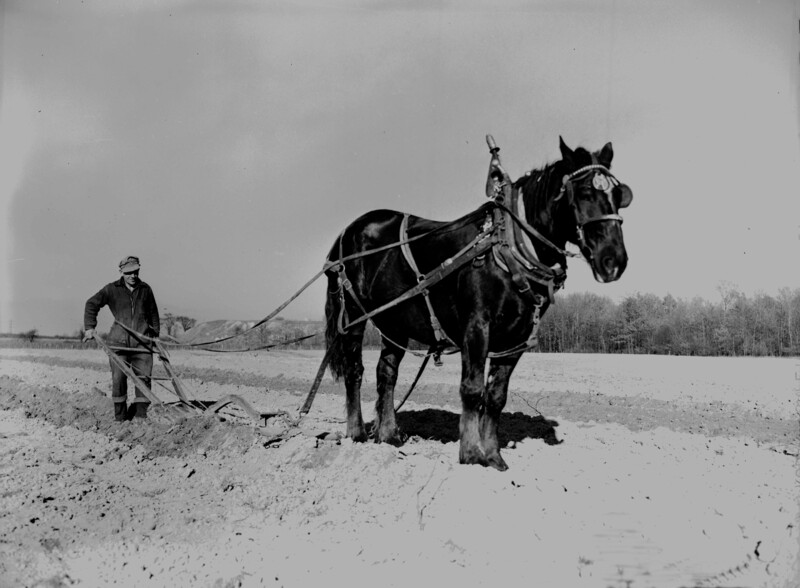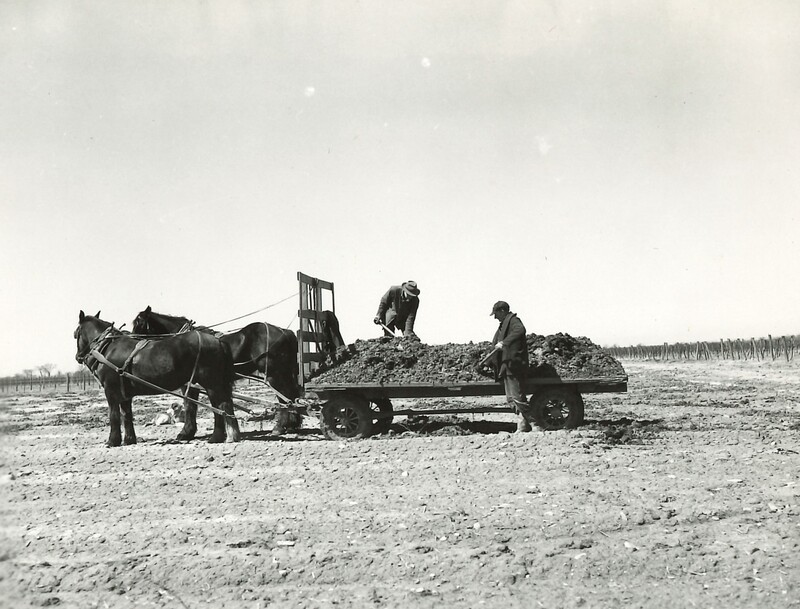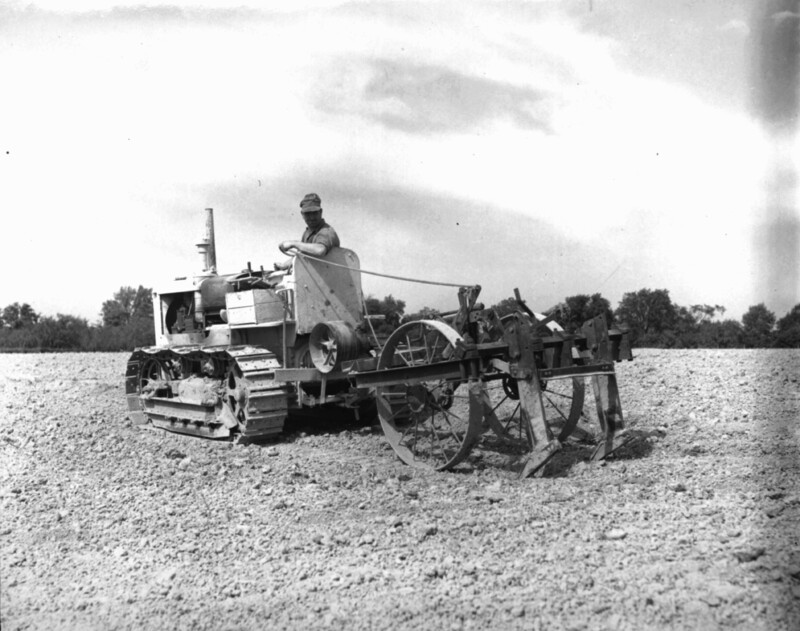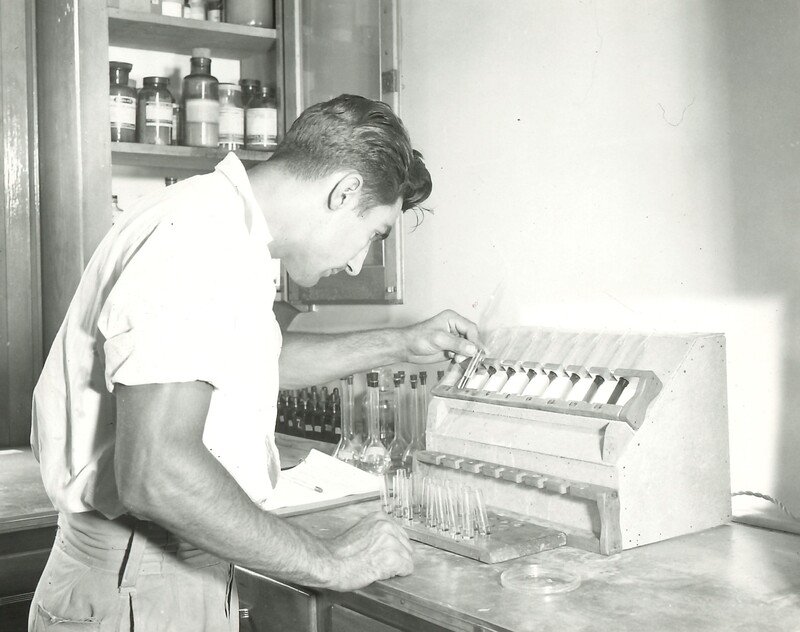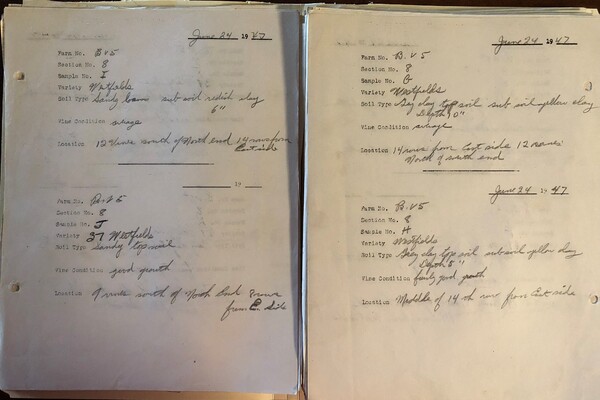Preparing the ground
Before any planting can be done in the vineyard, the ground must be prepared. These images from the George Hostetter fonds show the activities of the research vineyard staff at the T.G. Bright & Co. Limited, aka Brights Wines. Tilling the soil, marking rows, laying drainage tile and driving posts and setting up a trellis system all needed to be in place before the vines could be planted. In the 1940s and 1950s, Brights still retained the use of animals in farm labour, not an unlikely occurence in many farms in the Niagara region during this time.
As an ongoing process of producing stellar grape crops, soil analysis was conducted at many times during the lifecycle of a vineyard. Understanding soil structure and composition were one of the many analyses conducted by Brights staff to produce and enhance grape production.
